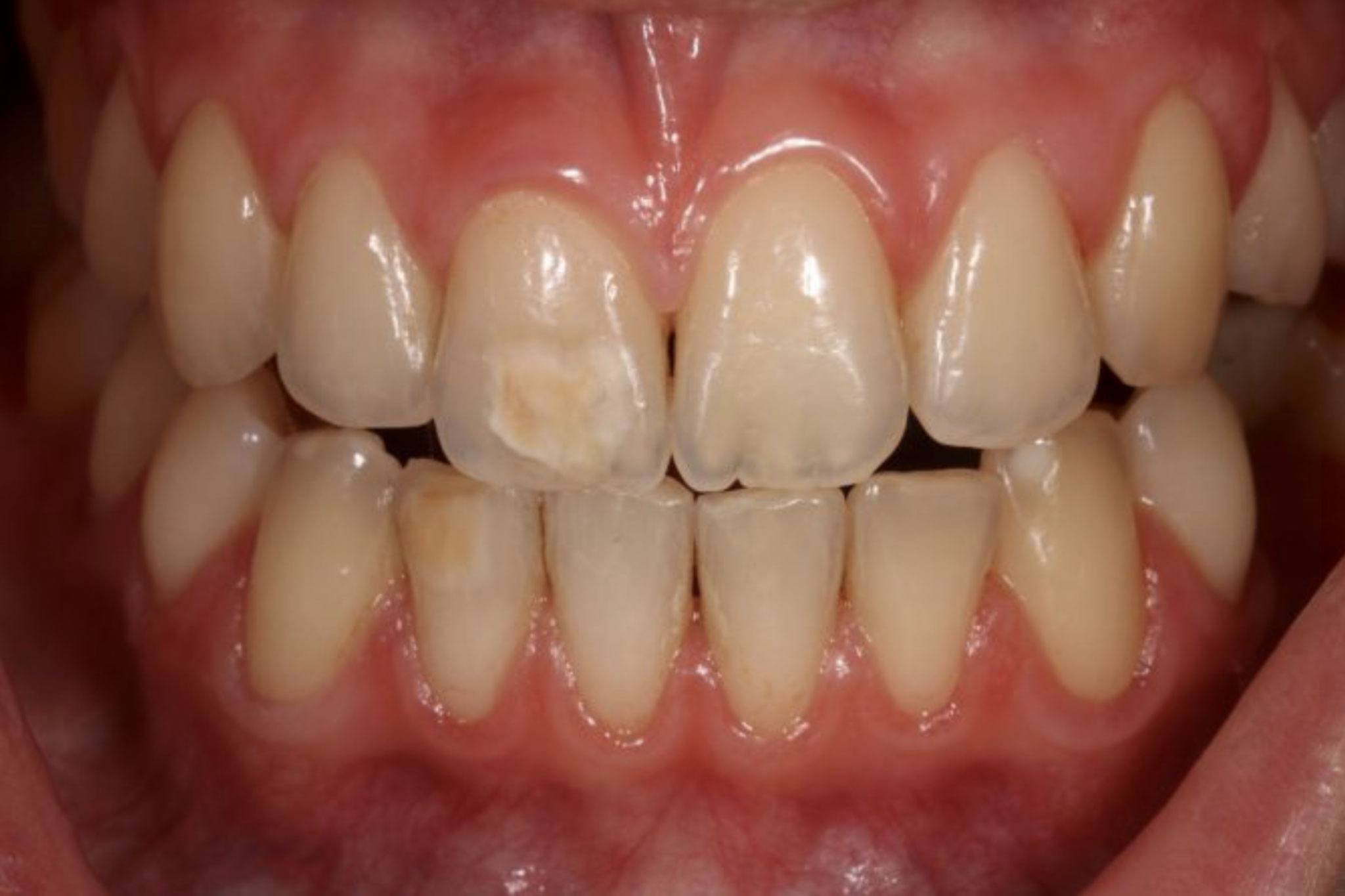Green Spots On Teeth

The appearance of green spots on teeth can be a concerning and embarrassing issue for many individuals. These unsightly spots can be caused by a variety of factors, ranging from poor oral hygiene to underlying health conditions. Understanding the causes and implications of green spots on teeth is essential for maintaining good oral health and overall well-being.
One of the primary causes of green spots on teeth is the accumulation of plaque and tartar. When bacteria in the mouth break down food particles, they produce acid, which can lead to the formation of plaque. If left untreated, plaque can harden into tartar, a stubborn substance that can only be removed by a dental professional. Tartar can appear as green or brown spots on the teeth, particularly near the gum line. Regular brushing and flossing can help prevent the buildup of plaque and tartar, but professional cleanings are often necessary to remove stubborn deposits.
Another factor that can contribute to the development of green spots on teeth is the consumption of certain foods and beverages. Chromogenic bacteria, which are naturally present in the mouth, can feed on sugars and starches, producing pigments that bind to tooth enamel. This can result in the formation of green or yellow spots on the teeth. Foods and beverages that are high in sugar, acid, or artificial coloring, such as coffee, tea, and energy drinks, can exacerbate this issue.
In addition to poor oral hygiene and dietary habits, green spots on teeth can also be caused by underlying health conditions. For example, individuals with gastroesophageal reflux disease (GERD) may experience tooth erosion due to the frequent flow of stomach acid into the mouth. This can lead to the formation of green or brown spots on the teeth, particularly on the molars and premolars. Similarly, individuals with celiac disease or other digestive disorders may be more prone to tooth discoloration due to malabsorption of essential nutrients.
In some cases, green spots on teeth can be a sign of a more serious underlying condition. For instance, individuals with kidney or liver disease may experience changes in tooth color or texture due to the buildup of toxins in the body. In rare cases, green spots on teeth can be a symptom of a genetic disorder, such as dentinogenesis imperfecta, which affects the development of tooth enamel and dentin.
To address green spots on teeth, it is essential to practice good oral hygiene and visit a dental professional regularly. A thorough cleaning and examination can help identify the underlying cause of the discoloration and inform an effective treatment plan. In some cases, professional teeth whitening or dental bonding may be necessary to restore the appearance of the teeth.
In addition to professional treatment, there are several home remedies that can help reduce the appearance of green spots on teeth. For example, brushing with a toothpaste containing mild abrasives, such as baking soda or silica, can help remove surface stains. Similarly, rinsing with a mouthwash containing hydrogen peroxide or essential oils, such as tea tree oil or peppermint oil, can help reduce bacteria and freshen breath.
It is also important to note that green spots on teeth can be prevented through a combination of good oral hygiene, a balanced diet, and regular dental check-ups. By understanding the causes and implications of green spots on teeth, individuals can take proactive steps to maintain good oral health and prevent the development of unsightly discoloration.
What causes green spots on teeth?
+Green spots on teeth can be caused by a variety of factors, including poor oral hygiene, dietary habits, and underlying health conditions. Plaque and tartar buildup, chromogenic bacteria, and the consumption of certain foods and beverages can all contribute to the development of green spots.
How can I prevent green spots on teeth?
+Preventing green spots on teeth requires a combination of good oral hygiene, a balanced diet, and regular dental check-ups. Brushing and flossing regularly, avoiding sugary and acidic foods and beverages, and visiting a dental professional regularly can help maintain good oral health and prevent the development of unsightly discoloration.
Can green spots on teeth be a sign of an underlying health condition?
+Yes, in some cases, green spots on teeth can be a sign of an underlying health condition. Individuals with kidney or liver disease, celiac disease, or other digestive disorders may experience changes in tooth color or texture due to the buildup of toxins or malabsorption of essential nutrients. It is essential to consult a dental professional or healthcare provider to determine the underlying cause of green spots on teeth.
In conclusion, green spots on teeth can be a concerning issue that affects not only the appearance of the teeth but also overall oral health. By understanding the causes and implications of green spots on teeth, individuals can take proactive steps to maintain good oral hygiene, prevent the development of unsightly discoloration, and address any underlying health conditions that may be contributing to the issue. Regular dental check-ups, a balanced diet, and good oral hygiene practices can help prevent green spots on teeth and promote overall well-being.
